Over the years, I’ve done several songs that focus on my love—and, it would seem, the love of some film-makers and lyricists, too—for nature. I have done lists of nature songs; tree songs; and bird songs. Over the years, too, I’ve several times been told I should do a list on flower songs. I’ve always ducked that one, because Harvey, years ago, did a superb post on flower songs, and how I could I possibly hope to even match, let alone excel, a botanist writing about flower songs?!
But over the past couple of years, my interest in flowers has grown exponentially, and while I may not know a hundredth of what Harvey knows, at least I can depend upon my enthusiasm to steer me through. So here goes.
Flowers are, to put it bluntly, the sexual part of a plant. Contained in them are the female and male reproductive organs, plus (often) nectar, to entice pollinators such as bees, butterflies, bats, other insects, small birds, and so on.
Flowers are beautiful, flowers are useful (there would be no fruit without flowers), and human beings have admired and used flowers in a myriad ways since time immemorial. We’ve decorated with them, we’ve used their designs to fashion everything from jewellery to embroidery. We’ve painted and carved them, we’ve celebrated them in literature and in song.
Here, then, are ten songs from Hindi cinema that mention a flower. To make this not quite a sitter, I’ve imposed the following restrictions on myself:
a. Each song should be about a different flower
b. The name of the flower must appear in the first two lines of the song
c. The song should be about the flower itself (not, say, as in Sun Champa sun Tara, where it is the name of a person)
As always, of course, these songs are all from pre-1970s films which I’ve seen. In no particular order:
1. Champakali chhup-chhup jaaye re (Mahabharat, 1965): Champa; Plumeria/Frangipani. This classic flowering tree of the tropics is much-loved not just in India, but across the tropics: its lovely, fragrant flowers are offered in worship, threaded onto welcome garlands from Hawaii to Thailand, and used in decorations everywhere it’s hot and humid.
There are other songs about the champa as well (my post on trees included Champakali dekho jhuk hi gayi); and there’s the 1957 Suchitra Sen film, Champakali, as well. This one, which features Dara Singh as a somewhat befuddled Bhim, has him looking on while a bevy of dancers entice him. The song is all about the attraction between the bhanwra (the bumble bee) and the champa bud: the demureness of the champa, its shyness and fragility, offset by the curiosity and relative boldness of the bumble bee.
The video of this song isn’t available separately; for that you’ll need to watch it within the film (it begins at about 18:19 in this version).
2. Juhi ki kali meri laadli (Dil ek Mandir, 1963): Juhi; Jasmine (Jasminum auriculatum). Jasmine, in its myriad forms (mogra, chameli, chandini, etc are also members of the jasmine family) is another of India’s important flowers. Starry, white and highly scented, juhi is a flower that appears in other songs (it’s one of several flowers mentioned in Ketaki gulaab, for instance), and here it’s used to describe a little girl. Meena Kumari’s character sings, to the small girl she’s befriended in the hospital, addressing her as the bud of the juhi. Interestingly, there’s another flower reference buried further in the song: she likens the little one’s body to a bouquet of champa flowers.
3. Ae nargis-e-mastaana (Aarzoo, 1965): Nargis; Narcissus. As in the two previous songs, another case of a person being described as a flower. And, given that this song is set in Kashmir, a fitting flower too, one of my favourite blossoms of Kashmir: the exquisitely scented narcissus. Rajendra Kumar’s character praises the lovely Sadhana, whom he’s fallen head over heels in love with, by calling her an ‘intoxicated narcissus’: carefree, joyous, irresistible.
Interestingly, the ‘nargis-e-mastaana’ epithet is also used in Urdu poetry in the Sufi tradition, as you can see in this instance. I cannot be certain, but it seems as if the nargis-e-mastaana here refers to a peer, a much-revered Sufi saint. I wonder if Hasrat Jaipuri, who wrote Ae nargis-e-mastaana, was inspired by this usage, as is common in Urdu poetry, where the beloved is elevated to the position of a deity, one to be revered, if not outright worshipped.
4. Chaman ke phool bhi tujhko gulaab kehte hain (Shikari, 1963): Gulaab; Rose. Roses are among the most popular flowers, globally. They find their way into perfumes, into food, into literature and song and art. From Shakespeare’s A rose by any other name to The Yellow Rose of Texas, the rose has been celebrated repeatedly.
In Hindi cinema too, there are other songs about roses, such as Tum saiyyaan gulaab ke phool, Sun sun sun o gulaabi kali, and (of course) Ketaki gulaab juhi champak. This one, though, is my favourite: the music and the rendition are simply sublime. I don’t care for Ajit and Ragini here, but I love the fact that they’re in a setting which is believable as a flower-filled wilderness: there are loads of colourful real flowers around, and not a manicured lawn or a pruned hedge in sight.
5. Ketaki gulaab juhi champak ban phoole (Basant Bahaar, 1956): Champak; Joy Perfume (Magnolia). Given that I’ve already mentioned this song thrice in the list already, it’s time I wrote about the song itself. One of the great classical duets of Hindi cinema, Ketaki gulaab juhi champak ban phoole pitted Manna Dey against Pandit Bhimsen Joshi. Stunning vocals, of course, but the lyrics (by Shailendra) are lovely too.
I was torn about this one: which of the flowers it lists should I focus on? I realized I had other songs about gulaab and juhi; and ketaki (kewra, screwpine) is known, not for the beauty of its rather pedestrian-looking flowers, but for the fragrance in the leaves as well as the flowers. So champak it was, an elegant yellow flower, part of the magnolia family, that’s also known (confusingly enough) as champa, or as son champa—among other names. Its common English name of joy perfume is a very good description.
6. Kuchh din pehle ek taal mein kamal-kunj ke andar (Laajwanti, 1958): Kamal; Lotus. India’s national flower, and one that has been venerated in India for many millennia, the lotus is also one of the most popular motifs in Indian art and craft. It is carved on Mughal tombs, worked into jewellery, painted and embroidered on fabrics—and is used in symbolic ways too (the lotus’s ability to grow with its roots anchored in mud but its beauty unsullied is considered a metaphor for virtue in the midst of turmoil and depravity).
In most flower songs, the flower is used as a stand-in for a human being; not so in this song. Here, when Nargis’s character tells her students a story—in song—she refers to actual lotuses. The entire story is a metaphor for her own life, but her listeners don’t know that; for them, the tale of two swans that lived in a home made of lotuses is just that.
7. Kali anaar ki itna na sataao (Chhoti Bahen, 1959): Anaar; Pomegranate. The pomegranate is one of those rare Indian trees that is not just known for its fruit, but for its flowers as well. In fact, flowers at two stages: the buds (anaarkali) and the flower itself (gulnaar): both are symbolic of beauty and perfection. As in previous allusions to buds (champakali, juhi ki kali, etc), here too, the ‘kali’ implies innocence and purity. Rehman’s character serenades his sweetheart (Shyama), referring to her as the teasing anaarkali; she, in turn, flings another floral epithet at him: she calls him a ‘guncha gulaab ka’, a rosebud. No flowers to be seen in the picturization here, but it’s a song I like.
8. Ek chameli ke mandve tale (Cha Cha Cha, 1964): Chameli; Jasmine (Jasminum grandiflorum). Like the juhi, bela, mogra and chandini, chameli too is one of the many species of jasmine that are known and much loved in India. Fragrant and delicate, chameli is used in poojas, as well as in ornamentation: in gajra, for instance (well, most of the jasmines are used for these, but chameli, by virtue of being relatively abundant, is more commonly used).
In what is a dream sequence of sorts (it’s imagined, though not really a dream), the characters of Helen and Chandrashekhar, as Anarkali and Salim, sing a love song, imagining their love blossoming in the scented shade of a chameli bush. No chameli to be seen in the picturization, sadly, but it’s a lovely song.
9. Phul gendwa na maaro lagat karejwa mein chot (Dooj ka Chaand, 1964): Genda; True Marigold (Tagetes spp). You’d think, given how ubiquitous marigolds seem to be in India—they are pretty much the default flower for decorations on any large scale—they were native to this country. But no; marigolds are native to South and Central America, and they arrived in India only as a result of the Columbian Exchange.
But now, of course, they are all over. They are cultivated in huge quantities, they are offered in temples, mounds of them are sold in markets across the country. And, in this wonderfully rendered classical song sung by Manna Dey and lip-synced by Agha, a marigold becomes a symbol of playfulness. Flung at a lover by a teasing sweetheart, it evokes a pleasurable pain (really? But poetic license, see).
10. Peeli-peeli sarson phooli (Upkaar, 1967): Sarson; Mustard. And, to end the list, a song about a flower that isn’t ornamental in the true sense (though thousands of Indians, I am sure, think that there are few sights as beautiful as fields of mustard in full bloom). Mustard flowers may not, individually, look particularly striking; but massed, they are a glorious sight—and a potent symbol of spring, of rejuvenation and hope. In North India, especially in Punjab and Haryana, they are a motif associated with the festivals of Basant Panchami and Baisakhi.
In this folksy song from Upkaar, too, it’s Basant Panchami that’s being celebrated, the golden hue of the blossoming mustard is reflected in the mustard-yellow turbans of the men and the yellow odhnis of the women. And, in what is a rare case of the picturization of the song matching the lyrics, the song actually begins with a shot of a mustard field in bloom, the flowers waving in the breeze.
So that’s my list of flower songs. Yes, I know I could do another post (more than one!) on songs that mention phool or gul, but I’ll keep that for later. For now, please add other songs you may know of that mention a particular type of flower (and I know there are plenty—in fact, other languages, like Bangla, Odia, Tamil and Malayalam seem to have songs celebrating other wonderful flowers that never find a mention in Hindi songs).
Also, P.S. Hindi cinema seems to have named many, many films after flowers (though I think in a lot of cases, the flower-name may actually be the name of a character, rather than a reference to the flower itself). Among these, I’ve come across Banphool (1971; banphool is pansy); Champakali (1957; frangipani bud); Neelkamal (1968; blue lotus); Neelmani (1957 (petrea or sandpaper vine); Gul-e-Bakawali (1963; queen of the night, Epiphyllum oxypetalum); Chandramukhi (1960; chrysanthemum, though the flower is more commonly known by its Urdu name, gul-daudi); Gulbahar (1954; daisy); Naag Champa (1958; both Plumeria pudica and cannonball tree); Raat ki Rani (1949; night-blooming jessamine); and—of course—Rajnigandha (1974; tuberose).

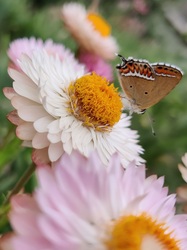




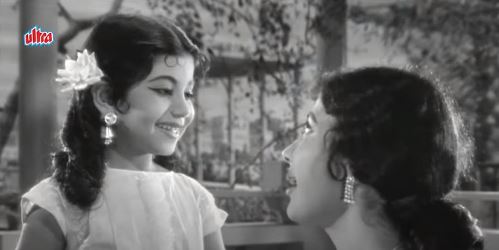

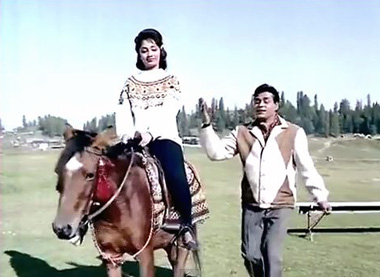

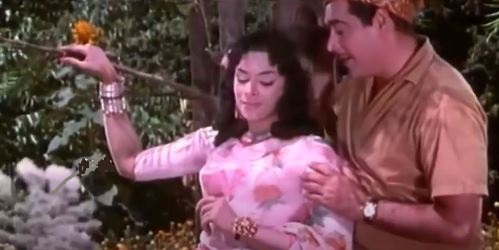
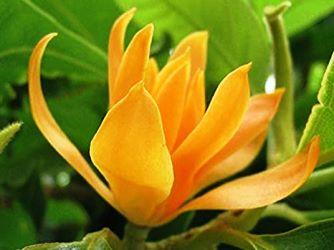




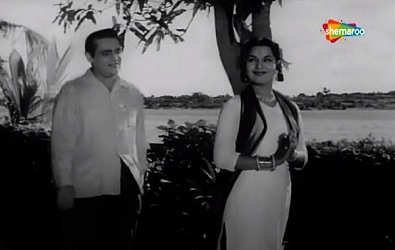
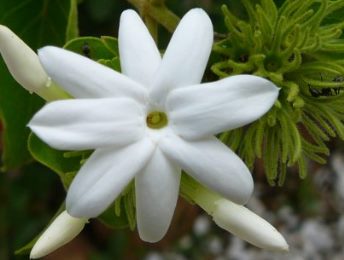

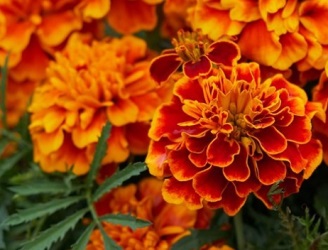
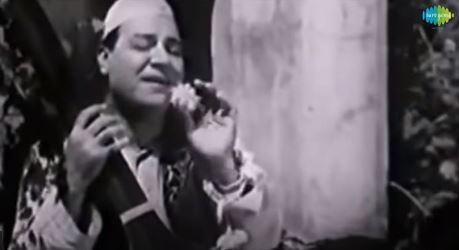
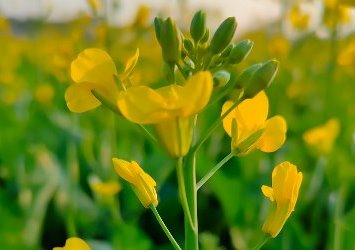

An astonishing depth of knowledge!
Intimidating.
LikeLiked by 1 person
Not really. :-) Just a good deal of research, and an equal amount of curiosity to start with.
LikeLike
🙏
LikeLiked by 1 person
Does Rajnigandha title songs qualify for this list
LikeLiked by 1 person
I couldn’t include it, since my blog focuses only on pre-70s films, but of course Rajnigandha phool tumhaare fits perfectly in a list of flower songs.
LikeLike
Dear all,
I was just hoping that this song ” Rajnigandha phool tumhaare” would be mentioned by someone.
I still recollect the making of this film, and the shooting of this song, way back in the early 1970s, with the cast and Suresh Jindal, Basu Chatterji and K K Mahajan….
Thanks a lot, amitpankaj!
my best to all,
Praba Mahajan
LikeLiked by 1 person
(Quoted from a report in “The Wire”)
“Recording a Charming Song and Lata Mangeshkar’s Gesture of Generosity”.
How Suresh Jindal, a novice, first-time film producer, was completely bowled over by the singer’s kindness and humility when recording the song ‘Rajnigandha phool tumhare’.
Here is producer Suresh Jindal, in his own words:
https://thewire.in/film/suresh-jindal-lata-mangeshkar-rajnigandha-tribute
—————————————————————————
It makes for a fascinating heartwarming read!
Praba Mahajan
LikeLiked by 1 person
What a lovely anecdote! Thank you for sharing that, Praba.
LikeLike
Mujhe Ye Phool Na De
Tujhko Dilbari Ki Qasam”……….
You keep on giving though, Madhu, your posts are read with interest.
LikeLike
Thank you! For the appreciation, and for the song. Of course there are plenty of songs that mention phool or gul (someday I might do a post on those) but the focus in this list was on specific flowers. So if you think of any of those…
LikeLike
Very enjoyable and interesting!
I was planning a similar list, though hadn’t yet finalized it. Now should think of a twist in the theme.
Let me see….
Had instantly thought of Rajnigandha phool tumhare, but has been added already.
I guess there was a song mentioning surajmukhi, sunflower. But not exactly getting it.
I’m not sure…
:-)
LikeLiked by 1 person
I’m glad you enjoyed this list, Anupji! I would love to see your list, whenever you publish it.
Of course since you don’t restrict your blog posts to any specific period, you can include later songs too. There’s a surajmukhi song from Kalaakaar; Surajmukhi mukhda tera:
There was also a film (1950, I think? Or that decade, at any rate) called Surajmukhi, but I don’t think it had any songs about the flower.
LikeLike
Oh yes!
The song from Kalaakar!
Thank you for the link.
And,
Yes there’s a film by the name surajmukhi from the 50s. If I’m correct the composer were husnalal bhagatram.
LikeLiked by 1 person
Have a couple of songs that come to my mind .
Can’t paste the links right now so just listing the songs..
1.The lilting ‘Gulmohar gar tumhara naam hota’ from the movie Devata
2. Not a particularly inspiring song although the music is by Ravi, but it gets the flowers in . ‘Le Lo Champa Chameli Gulaab leilo’ from Sone ke Haath
Some more songs … perhaps will come by and by .
LikeLiked by 1 person
Gulmohar gar tumhaara naam hota is lovely. :-) So glad you posted that! I don’t think I’ve heard Le lo champa chameli gulaab le lo before (probably because it’s so forgettable; you’re right about it being not especially inspiring):
Another song which has someone selling a whole array of flowers is this one from Jaadoo; Le lo le lo do phooldaani:
LikeLike
Here is the link for Gulmohar gar tumhara naam hota (though I think you embedded it already)
LikeLiked by 1 person
It’s a wonderful post!
You may not be a botanist but you’re knowledgeable, and it’s really cool how you research so deeply for your posts.
Sadly, I recognize only two songs (Ae Nargis – e – mastana & phool gendwa). Also, I didn’t know Chandramukhi was a flower.I thought it was simply a term for people with ‘chaand sa chehra’. 😊
Rajnigandha… is a lovely song.
LikeLiked by 1 person
I’m so glad you enjoyed this, thank you! I do love making song lists, so doing the research for them, while taxing (and often stretching over several years, even…) is fun.
Rajnigandha phool tumhaare is really a beautiful song. If I didn’t restrict myself to pre-70s films, it would have been right up there on the list. :-)
LikeLike
I’m totally clueless about plants in general although I can identify a few flowers. Very informational post, Madhu, accompanied by delightful songs. I had no idea champa and champak are two different flowers. Also, I thought jasmine was rajanigandha. Many of Tagore’s songs feature flowers but they are in Bengali and I have no idea what their English/Latin names are. Do you know what “togor” (Bengali pronunciation) is in Hindi or English?
LikeLiked by 1 person
I am glad you enjoyed this post, and learnt something, Soumya! Thank you. I am not absolutely certain, but from a cursory search on Google, I found that ‘togor’ is probably crape jasmine, what is known in Hindi as chandni:
https://www.meesho.com/togor-flower-plant-crape-jasmine/p/38czyn
I do remember reading that there are lots of Bengali songs (including, of course, Tagore’s) about flowers. If there are any in particular that you like, please do share! I would love to hear.
LikeLike
Ask and ye shall receive. :-). Flowers in parenthesis.
1. Ami Poth Bhola Ek Pathik Eshechi – https://www.youtube.com/watch?v=qoXn6i6qD0U (Chameli, Mallika)
2. Mone Ki Dwidha Rekhe Gele – https://www.youtube.com/watch?v=poK1BgyW8nM (Juthi)
3. Kadamberi Kanan Gheri – https://www.youtube.com/watch?v=C8SGZ3oArPE (Kadamba)
4. Keno Amay Pagol Kore Jash – https://www.youtube.com/watch?v=UqWfhlxqHOE (Nagkeshor)
5. Shiter Bone Kon She Kothin – https://www.youtube.com/watch?v=Svn1F_eOZhA (Shiuli)
6. Phagun Haoway Haoway Range Range (Golap, Parul Champa, Palaash, Parijat)
LikeLike
Sorry for the very delayed reply – I’m traveling and only managed to get on the net today. This is a lovely collection of songs. I did remember coming across a number of Bengali flower songs some years ago, when I first began thinking of this post. I think the shiuli song was among those, and perhaps also a song about palash (flame of the forest).
These are a joy, Soumya. Thanks so much.
LikeLike
It’s a beatifl song from Pakistani movie Dil aur Duniya by Runa Laila, cant resist to post.
LikeLike
Thank you! I do like Runa Laila a lot, so Champa aur chameli yeh kaliyaan is especially welcome. Very nice.
LikeLike
Your passion for the movies on one hand and for Indian cine-music on the other leads you to go for such research which is extensive as well as deep. And the result is such amazing posts. Even the adjective ‘extraordinary’ appears to be insufficient for praising and assessing this post. A treasure of information it is. Hats off !
LikeLike
You are so supportive and encouraging, Jitendraji. Thank you so much, I’m truly grateful.
LikeLiked by 1 person
Back with a couple of more :
Kachi kali kachnar ki, sung by the inimitable Manna Dey for a movie called Hungama (?) and music by RD..
As I was looking for this song, which i remembered from my childhood, You tube gave me this ! Sorry but ughhhh !!
LikeLike
I was wondering when someone would add Kachhi kali kachnar ki, thank you! The later Kachhi kali kachnar ki… ah, well. :-) But if it fits…!
LikeLike
Amongst newer ones, there is the delighful Sarural Genda Phool from Delhi 6 , originally a Chattisgarhi folksong ..
LikeLike
Ah. I came across this one when researching this post, but had to leave it out because it’s so new. Thank you for adding it!
LikeLike
This is a nice one, and nicely done as well… the winter afternoon on an old delhi kotha..
LikeLiked by 1 person
… which reminds me, I need to watch this film sometime.
LikeLike
Flowers! Ah.
Well what I remember when there is a mention of flowers is either ” baharo phool barsao” or the faiz lines
“Gulon mein rang bhare bad-e-nau-bahar chale”
I think if you bloodiest had the cutoff year of 1970, that prem rog song “bhanwre ne kiya phool” would hv found a place, hope am not wrong🥲
LikeLike
Actually, Bhanwre ne khilaaya phool is one song I absolutely loath. :-D I don’t know why, just a song I have never been able to like.
There are loads of phool and gul songs – maybe someday I will do a list of songs that use those words instead of specific flower names.
LikeLike
Right. Something terribly irritating and nagging about Bhanwre ne khilaya phool
LikeLiked by 1 person
Agreed… highly irritating (actually most of the PremRog songs get on my nerves somehow)
LikeLiked by 1 person
Same here! That’s one of the few Rishi Kapoor films that had songs I don’t like. Perhaps because it was one of his later films; the early 7Os Rishi films are all musical blockbusters for me, the 80s less so.
LikeLike
Madhuji, this is a lovely list of songs which of course would have required a lot of research. Also your gravatar is a flower!! Wonder which one it is?! Here are songs dedicated to two flowers – Parijat and Surajmukhi. There is an interesting story of the Parijat flowers and Lord Krishna’s wives. Parijat are lovely white flowers with an orange stem. The Parijat tree was planted in the abode of Lord Indra. This tree was part of the gifts received during the Samudra Manthan, or the churning of the ocean, and was a celestial plant, not found on earth. When Krishna’s wives Satyabhama and Rukmini each expressed a desire to have the tree exclusively to herself, the Lord set an example of the perfect balancing act. Thus, the Parijat tree story became a symbol of how Krishna divided his love equally among his wives.
There is a song on the Preijat flower in Srikrishna Satyabhama – Phule Parijat Re Angna . https://www.youtube.com/watch?v=TA26qSjuRgE
Suraj mukhi has already been mentioned. Here is another song dedicated to surajmukhi sung by Bhupinder. the use of the Veena in the song is beautiful. Suraj mukhi tera pyaar anokha hai – https://www.youtube.com/watch?v=Wiww90agatQ.
LikeLike
Thank you for those songs, and for the story of the parijat – I had read that ages ago, but had forgotten all about it.
I am so glad you came up with these songs, they are such rare ones, they need to be better known.
LikeLike
I think my other two comments got gobbled up …
LikeLike
Yes, WordPress ka spam filter working overtime!
LikeLike
Wonderful post! I always look enjoy your posts as you provide so much information along with some wonderful old songs. Here are two songs that I think fits the theme.
Khilte hai gul yahan from Sharmilee
It’s a Kannda song. It has 2 names. Naidhile is Water lily and Tavare in the second line is lotus.
LikeLike
SOS, Madhuji!
LikeLike
Done. The spam filter has gone haywire. :-(
LikeLike
Another “flowery” song …..a flop one from an equally flop movie “Sone Ke Haath” ….plus which doesn’t qualify for being in this list as it’s a post 1970( 1973 to be precise) is being mentioned by me just for the fact that it mentions 3 flowers together: Le lo champa, chameli, gulaab lei lo” !
LikeLike
I did come across that song while researching this post, and was hoping someone would mention it. Thank you for that!
LikeLike
Wonderful post! I always enjoy reading your posts as you provide so much information along with some great songs!
Here’s two songs that I think should fit?
Khilte hai gul yahan from Sharmilee
This is a kannada song which mentions water lily and lotus.
Naidhile is water lily and taavare is lotus.
LikeLike
The song is “Naidhileyu hunnimeya” from Badavara Bandhu
LikeLike
Thank you. :-)
LikeLike
Actually, the post is about songs that mention specific species of flowers, not flowers in general. So while Khilte hain gul yahaan is a lovely song, it doesn’t fit. But a song about water lily and lotus certainly does fit! Thank you so much for that, I am always happy when someone is able to provide a song from another language.
LikeLike
And here I was wondering why no one posted Khilte hain gul song. Lol!
LikeLiked by 1 person
Would it surprise you that I had a ‘flowers songs’ list? :) Most of your songs find echoes in mine, so I think I will scrap it.
Had a lovely time going through this list and the ones in the comments.
(Back home finally; and mostly alive, so I hope to revive my poor defunct blog.)
LikeLiked by 1 person
I am sorry for the very delayed response to your comments, Anu – was travelling and out of range of the net. :-) Am back now, and very happy to know that you will hopefully be back to blogging soon! Prayers for your good health, and many hugs.
LikeLike
Adding a few more…
Ram kare babua from Anuraag , for the ‘चम्पा चमेली मुस्काये..’
Kisi shayar ki ghazal from Dreamgirl , for the ‘किसी झील का कँवल..’
There is this one, Chal chameli bagh mein , from the movie Krodhi, where Chameli Bagh is a place (there is a board that says that) , ostensibly referring to an orchard of chameli
Interestingly, My heart is beating from Julie, has a ‘plot of roses’
LikeLiked by 1 person
Arre wah! Especially a wah for the Chal chameli bagh mein bit – I had forgotten all about that, but it used to be such a popular song when I was a kid.
LikeLike
Adding a Kashmiri devotional song for Shiv , Bel tai maadal, vyen golaab, pamposh dastaaey , where you can see Bel mentioned as also Maadal , but for the puposes of this post, there is vyen golaab (wild roses) and pamposh dastaaey (bouquet of lotuses) , being offere to the Param Shiva / Shivnath
I suppose devotional songs will find flowers specifically mentioned as the Divine lot has their indvidual preferences :)
Incidentally the version i link here is sung long ago by Madame Shamim Azad , a well reknowned singer from the family , who stopped singing professionally after getting married to the politician Ghulam Nabi Azad
LikeLike
When I was reading your earlier comments, it passed my mind that there might be some Kashmiri songs about flowers, especially given that Kashmir is so full of flowers! And here it is. Thank you so much, Anubha. Lovely.
(I hadn’t known about Mrs Ghulam Nabi Azad having been a famous singer. Thank you for that).
LikeLike
Happy New Year, Madhuji!
A nice bouquet of songs, all enjoyable and well-chosen!
Posting some songs, some known and some lesser known
1. Suryamukhi hai mukhda tera, nain kanwal hai – Tu Meri Main Tera
2. Man kyon behka re bheka aadhi raat ko bela mehka re mehka – Utsav
3. Chehra kanwal hai aapka – Maine Jeena Sikh Liya
4. Phool gulab ka – Biwi Ho To Aisi
LikeLike
Happy new year to you and your family too, Rajeshji! And thank you for these songs (I am wondering how I forgot the Utsav song – even though it’s too new to feature in my list, I should at least have remembered it).
LikeLike
Here are some Marathi songs:
1. Mogara phulala – NFS by Lata
2. Chafa bole na chafa chaale na – NFS by Lata
3. Rajnigandha jeevani hya – NFS by Anuradha
4. Angani parijat phulala – By Jaymala Shiledar
5. Malyachya malyamandi …..gulab jai jui mogara – Film Saadhi Manse
6. Champa chameli ki jai aboli – Fillm Nanand Bhavjai
LikeLike
Thank you so much for these! Very nice. Which flower is indicated in Chafa bole na chafa chaale na, please? I could figure out the others, but not that…
LikeLike
The flower here Chafa is Champak.
LikeLiked by 1 person
Thank you.
LikeLike
Phool tumhain bheja hai
Though after 1970. Champa nahi from saudagar
LikeLike
Nice post. I love ‘Juhi ki kali’ and ‘Rajniganda phool tumhare’
Phoolon ke rang se does mention flowers.
I don’t particularly like Maine kaha phoolon se but it does mention flowers.
And though they do not fit the post, cannot help but mention…
‘Dekha ek khwab to ye silsile hue
And a lovely ‘Phir chhidi raat, baat phooloki
Kehne ko Jashne Bahara hai
And how can I not mention my favorite marathi song
Ketakichya bani tithe sung by Suman Kalyanpur.
followed by few more mentioning flowers….
Dhundi Kalyanna, dhundi Phoolana
Yeh aboli laaj gali
‘Raat Rani geet mhane ga
LikeLiked by 1 person
Thank you, lots of beautiful songs there, though the point of this post was about songs that mentioned specific species of flowers, not generic ‘phool’, ‘gul’, etc.
LikeLike
In my earlier post, I forgot to add lovely Hai kali kali ke lab par in my earlier post.
And title song of television series produced by Mumbai Doordarshan Ranjai Jai is Royal/Spanish jasmine flower. This series was hosted by two eminent ladies Dr. Sarojini Babar & Poetess Shanta Shelke and was conceptualized to showcase age old poetry & folk tales which were part of womenfolk of Maharashtra. Hence the name.
LikeLiked by 1 person
As usual I come late to the party. Thanks for mentioning my post and correcting my wrong identification of champa. I mixed up champa and champak. It was also a good excuse to visit my post.
And my favourite song from it champa khili daar – Aaj Raat Ko/Faisla [1974]
Tum sainyya gulaab ke phool from Navrang is a song, which Ava itnroduced me to and developed quite a liking for, but it doesn’t fulfill your criteria.
LikeLiked by 1 person
I actually hadn’t noticed that you mixed up champa and champak! I made it a point to not visit your blog post until I’d completely written up mine, because I didn’t want to even inadvertently get influenced. :-)
Tum saiyyan gulaab ke phool would meet the criteria, I think? Why do you say not?
LikeLike
Now that you say it, it was just an assumption I think.
I have forgotten how to link an url to text, so sorry that I didn’t provide them.
LikeLiked by 1 person
No worries, as long as you have given the name of the song, that’s all well. As it is, too many links slow the page down!
LikeLike